The String of Bananas plant, Curio radicans (aka Senecio radicans), is a unique and eye-catching succulent that is prized for its long, trailing stems and finger-like leaves that resemble miniature bananas.
This low-maintenance plant is native to South Africa (Madagascar) and is part of the Asteraceae plant family.
Can the string of Bananas Grow indoors? String of bananas is well-suited for growing indoors in a hanging basket, where its stems can cascade down and its leaves can create an interesting texture.
With proper care, the String of Bananas plant can grow to be several feet (8 feet long and longer if allowed), which creates an attractive and unusual addition to any indoor or outdoor space.
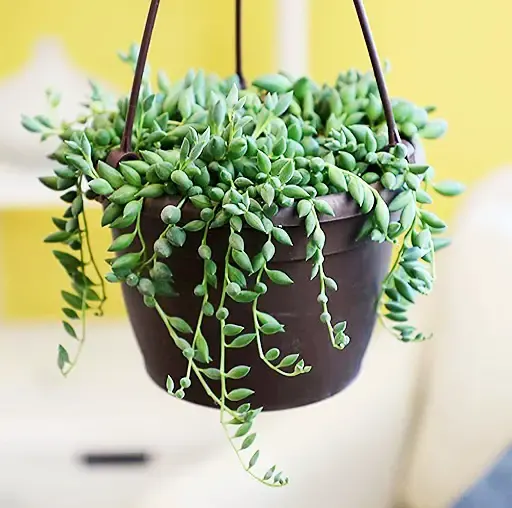
Where Can I Buy String of Bananas Plant?
Is string of bananas rare? String of Bananas is not actually considered a rare plant but it may be difficult to source in your particular location or in the off season. It is not as commonly found as some other houseplants, but garden centers, nurseries, and online plant retailers carry String of Bananas from time to time.
String of Bananas is usually available online on both Etsy and Amazon. I checked Costa Farms but there is no listing for it at this time. Linked below is an Etsy shop with good reviews and lots of sales.
Be careful when shopping at your local big box garden center. It is very easy to confuse the various string plants. When you find a String of Fishhooks, String of pickles and String of rain drops, they all can look very similar to the string of banana plant, especially when they are small and immature. These string plants are often confused in large garden centers and misnamed.
And all String of Bananas plants are not exactly the same shape, either. There can be variation in the shape and size of String of Bananas plants, depending on a variety of factors, including the plant’s growing conditions, and the age of the plant. Good hunting!
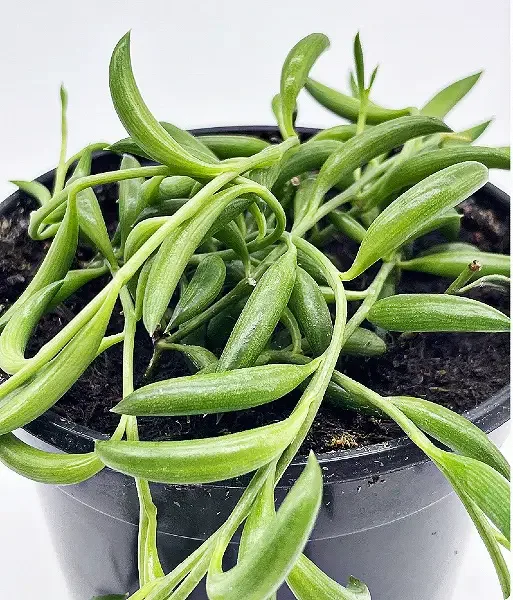
Some String of Bananas plants may be shorter and fatter, while others may be taller and more slender. The shape and size of the plant can also be influenced by the amount of light it receives, the frequency and amount of watering, and the type of soil it is grown in.
Does The String Of Banana Flower? Does Senecio radicans flower? The String of Bananas Vine does produce small yellow flowers. However, it is grown mainly for its long trailing stems with green finger-like leaves that resemble miniature bananas, rather than for its flowers.
The flowers are small and not very interesting and they can sap energy from the strings. If you want to trim the flowers off, the strings may get a boost. It is the interesting foliage that is the real standout feature of this fascinating plant.
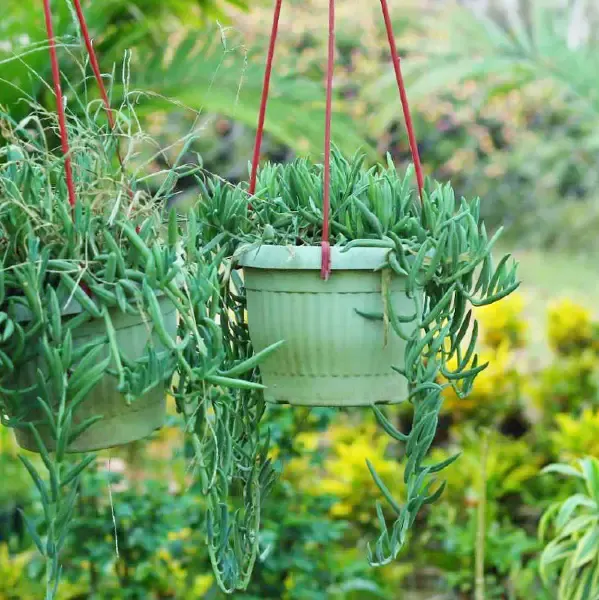
Can String Of Bananas Grow Outside?
String of Bananas (Curio radicans) can be grown outdoors in warm climates. This plant thrives in bright, indirect light and well-drained soil, and it prefers temperatures between 60°F and 80°F (15°C and 26°C).
What is the String of Bananas Hardiness? If you live in an area with a warm, tropical climate, you can grow String of Bananas outside(or inside) year round with little trouble. Here are some tips.
- Choose a suitable location: Select a location that receives bright, indirect light and is protected from strong winds. This plant is not tolerant of harsh, hot direct sunlight. Choose a spot that is shaded for part of the day.
- This plant will show best if allowed to hang. Try to find it a place where its strings can fall over a raised bed edge, grow it next to a waterfall feature where it can drape beside (not in) the water, or grow it in a container on a bench so the strings can fall attractively and show themselves off to best advantage..
- Plant String of Bananas in well-draining soil, rich in organic matter. You can add compost or other organic matter to the soil to improve its fertility and water-holding capacity. make sure to space the plants at least 18 to 24 inches (45 to 60 cm) apart to allow for adequate air circulation.
- Water regularly: String of Bananas requires consistently moist soil, so water regularly to keep the soil consistently moist. Be careful not to overwater, as this can lead to root rot.
- Fertilize regularly: String of Bananas benefits from regular fertilization, especially during the growing season. Use a balanced, water-soluble fertilizer every 2 to 4 weeks during the growing season to promote healthy growth.
Growing String of Bananas (Curio radicans) in a container on a patio is a great option if you live in a climate with warm summers and want to enjoy the plant’s trailing foliage and delicate, yellow flowers outdoors. Keep in mind that this plant is not frost-tolerant, so move it indoors during cold weather or during periods of frost.
Pruning the String Of Bananas:
How to Make String of Bananas Fuller: The best way to make the string of bananas plant fuller is to Prune it regularly. String of Bananas can become leggy over time, so it’s important to prune it regularly to encourage bushier fuller growth. If the plant is very leggy, Cut back the stems to a length of 6 to 8 inches to promote new growth and fullness.
Pruning the strings will encourage the plant to send out new shoots from the soil. Another way to get your plant fuller is to plant the strings you cut back, back into the soil with the mother plant. Keep the soil moist around the new stem cuttings and eventually they will take hold and grow you a fuller plant.
Can my String of Bananas grow upwards? Yes, it is possible for your String of Bananas plant to grow upwards, Although it won’t grab onto a trellis and will always try to trail.
To encourage upward growth, you can provide it with a sturdy support structure such as a trellis, wall or planter on a shelf. You can prune the trailing stems and train the plant to grow upwards by tying it to the support structure. As it grows, set the trailers where you want them and continue to tie them in place as needed for the effect you want.
Setting your String of Bananas by bright indirect light and feeding it well will encourage upward growth of the banana shaped leaves. But the thick strings will not tend to grow upwards on their own.
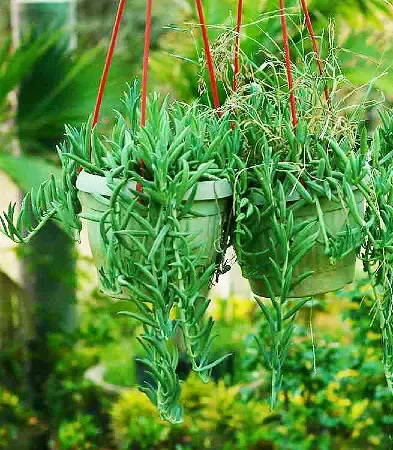
String of Bananas Plant Care:
String of Bananas plants are easy to care for and make great additions to your home and patio.
| Familiar Names | string of bananas plant, string of bananas, Fishhook Senecio, string of fishhooks, |
| Scientific Name | Curio radicans (aka- Senecio radicans) |
| Plant Family | Asteraceae |
| Care Difficulty | Easy. This plant will take some neglect and less than ideal conditions. But it is at its best when properly cared for. |
| Temperature | Tolerates temperatures down to 40 degrees F, will maybe survive a frost but best to bring the plant indoors at 50 degrees F to protect it. Grow at temperatures of 60 to 80 degrees F to keep it happy indoors or outside. |
| Growing conditions: | Grows outdoors in USDA Zones 10 a to 11. Best as a container hanging patio plant. Will easily naturalize into garden beds. Grows well as an indoor plant with adequate light. |
| Watering | Water weekly during the growing season and every other week in dormant season. The ‘banana’ leaves will shrivel as a sun the plant is under watered. Prefers lightly moist soil down halfway into the pot. |
| Humidity | These plants prefer a humid environment, so consider placing a tray of water near the plant, or plant groupings to increase the humidity in the air. |
| Soil | Cactus or succulent soil is the best choice. If using regular potting soil amend it with 50% perlite. A well-draining potting mix that is high in organic matter is best. |
| Fertilizer | Fertilize your Banana string plant once a month with a balanced, water-soluble fertilizer. |
| Lighting | Banana Strings plant prefers bright, indirect light but can tolerate some direct sun. However, too much direct sunlight can cause the leaves to scorch. |
| Growth Habit | They are a trailing plant and are often grown in hanging baskets. They can be tied to trellises to encourage an upward growing habit. |
| Pruning | Trimming the length of the string of banana will encourage it to send out new strings and increase the number of strings it grows and therefore the plant will get fuller. This string of things plant can grow string over 8 feet long (some are known to up to 14 Feet). |
How much sun does string of bananas need? String of Bananas plants prefer bright, indirect light but can tolerate some direct sun. It’s best to provide your plant with bright, indirect light for most of the day, with a few hours of direct sunlight in the morning or late afternoon. Too much direct sun can cause the leaves to bleach and scorch. Monitor the light your plant is receiving and adjust as needed.
If you’re growing your String of Bananas indoors, place it near a sunny window, but out of direct sunlight. This will provide the plant with the bright light it needs to thrive. If you’re unable to provide bright, indirect light (in a gloomy climate, low window home ,or winter months), try supplementing the light with artificial lighting, such as fluorescent lights or LED grow lights.
Trouble Shooting String of Banana Plant Care:
Why is my String of bananas dying at the bottom? There could be several reasons why your String of Bananas is dying at the bottom.
Like any other plant, String of Bananas (Curio radicans) can be susceptible to various problems that can cause yellowing leaves, wilting, or death. Some common issues include:
Is your String of Banana Plant dying or looking sick? If your String of Banana plant is dropping leaves, yellowing or shriveling, it may be dying but most likely you can save it.
- Overwatering: Overwatering can lead to root rot, which can cause the lower leaves to yellow and wilt, and eventually lead to the death of the plant at the soil level. To prevent overwatering, make sure to allow the soil to dry out slightly between waterings.
- Underwatering: If the plant is not getting enough water, the leaves can become yellow, dry, and brittle. To prevent underwatering, make sure to water your String of Bananas regularly and keep the soil consistently moist, but not soggy. Something to know: Very dry soils become hydrophobic. This means the root ball never gets any water since the soil is so dry it actually repels water. This is common in root bound plants. (Read our post on watering the string of hearts for more tips on watering string plants.)
- Too much direct sunlight: If the plant is exposed to too much direct sunlight, the leaves can become bleached, yellowed and shriveled, or dried out. To prevent this, place your String of Bananas in a location with bright, indirect light, but not much direct harsh sunlight. How Much sun does a string of Bananas need?
- Pests: Pests, such as spider mites, mealybugs, and scale insects, can infest the plant and cause yellowing, wilting, and death. To prevent pests, regularly inspect your plant and read our post on the seven most common plant pests and how to kill them. Watch String of Bananas for any signs of infestation and take appropriate measures to control them.
- Nutrient deficiencies: If the plant is not getting the nutrients it needs, the leaves can yellow and wilt. To prevent nutrient deficiencies, make sure to use a well-draining soil mix and fertilize your String of Bananas regularly with a balanced fertilizer. Read our post on how to fertilize houseplants for more tips on feeding your plant.
- Disease: Leaf spot and stem rot are two common diseases that can affect a String of Bananas plant. They are often caused by bacteria or fungi that thrive in moist, humid conditions.
If you are unsure of what is causing your plant to look sick, it may be helpful to read through our linked plant trouble shooting section below. We try to cover all the problems plants commonly have. We have some posts that apply particularly to succulents and string plants.
By being aware of these common problems and taking steps to prevent or address them, you can keep your String of Bananas healthy and thriving.
If you have particular questions and need personal help, please ask you questions in the comment section below and we will be happy to help.
Is String of Bananas Plant Toxic to Cats, Dogs, Birds or Humans?
Yes, the String of Bananas plant (Curio radicans) is considered toxic to cats, dogs and birds. It is also mildly toxic and irritating to people. This plant contains toxic saponins, which can cause vomiting, diarrhea, and other digestive symptoms if ingested.
In some cases, ingestion of the plant can also cause skin irritation (dermatitis), especially in animals or people with sensitive skin. If you have pets, birds, or small children, it’s important to keep the String of Bananas plant out of reach.
If you suspect that your pet has ingested part of this plant, it’s important to seek veterinary care right away. Early treatment can help to reduce the severity of symptoms and prevent more serious health problems.
More String of Things Posts:
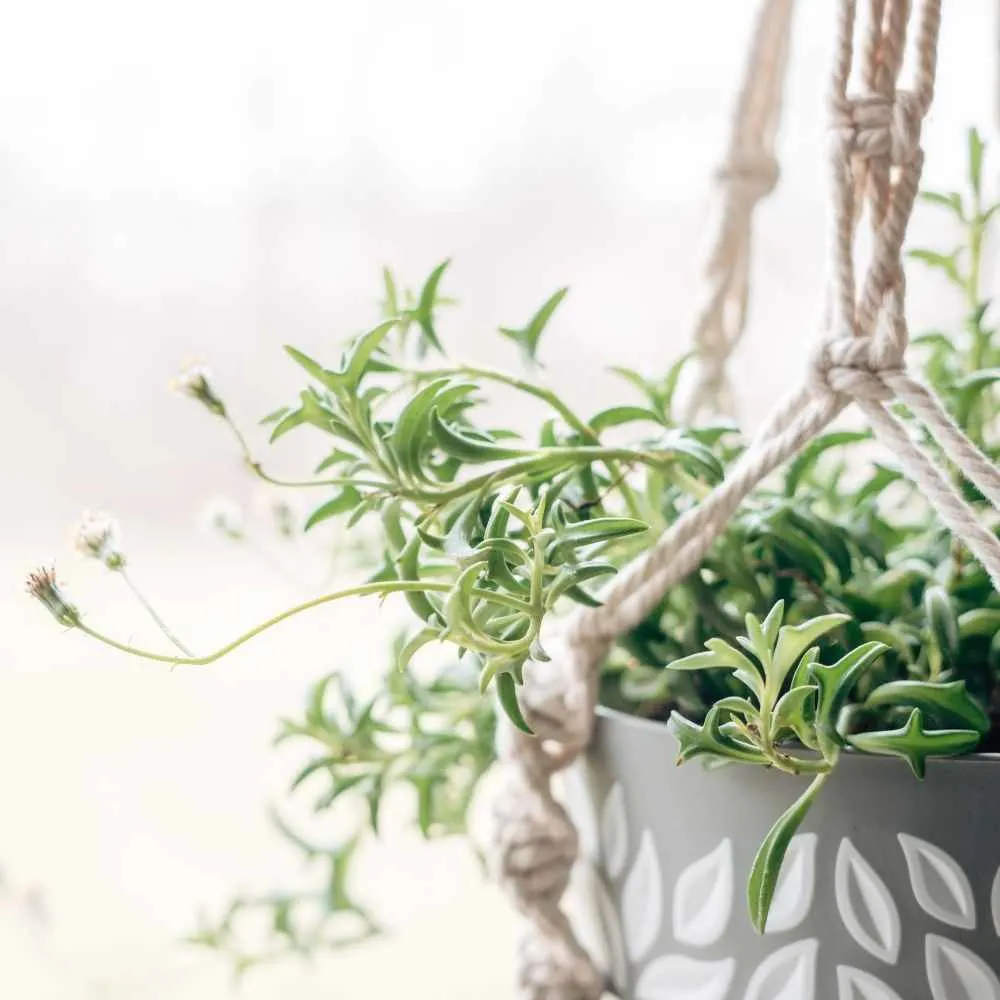
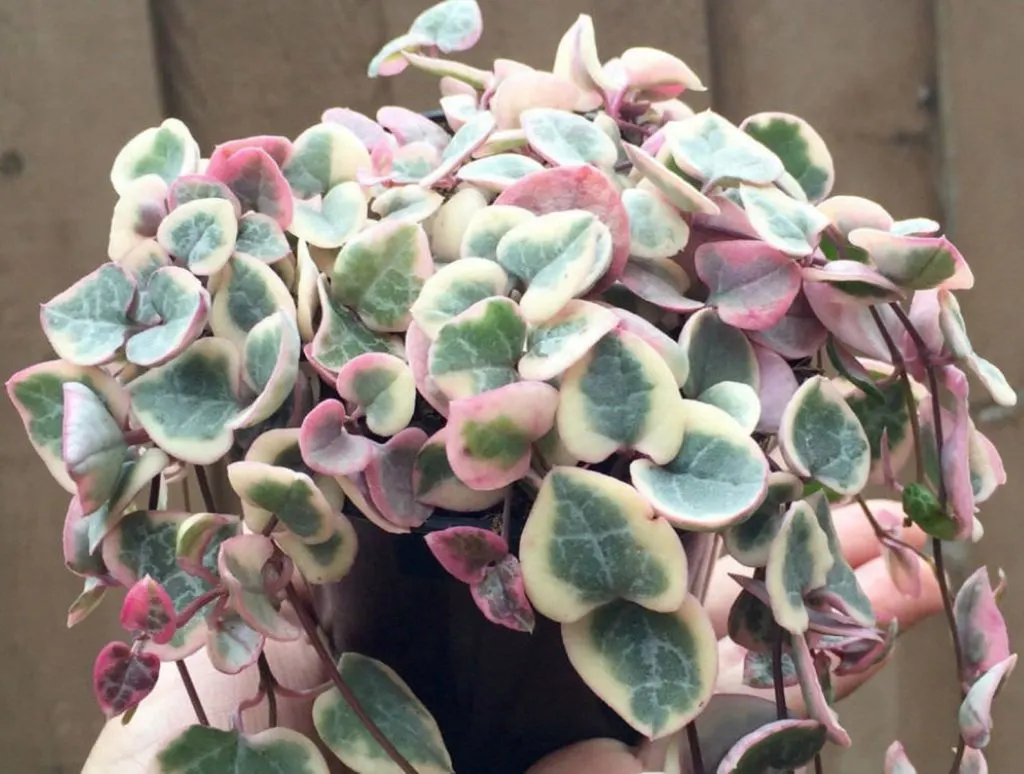
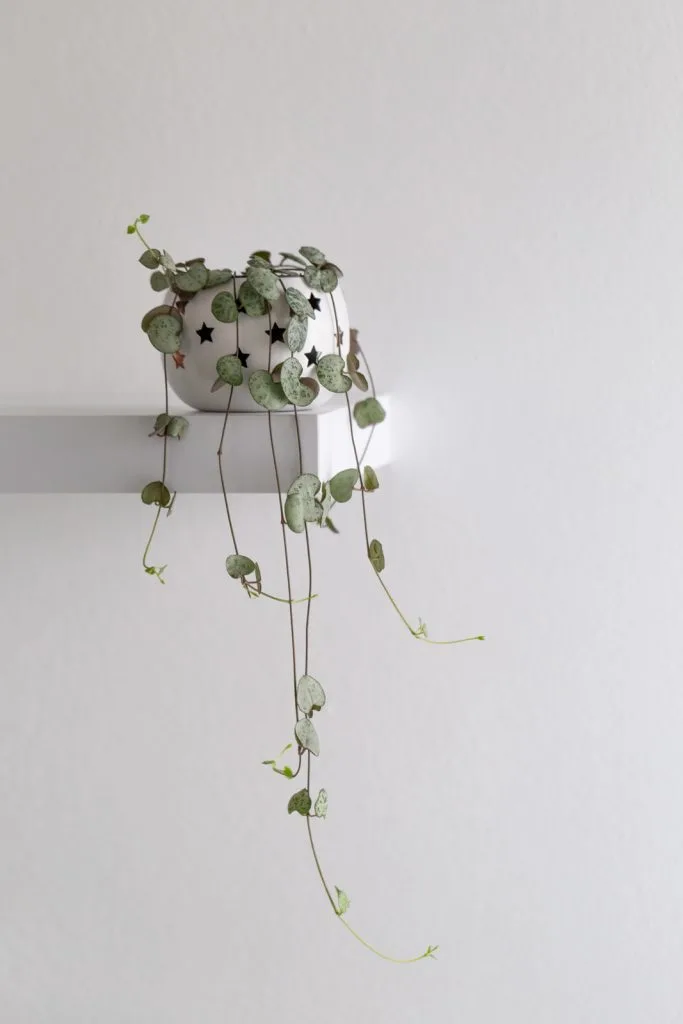
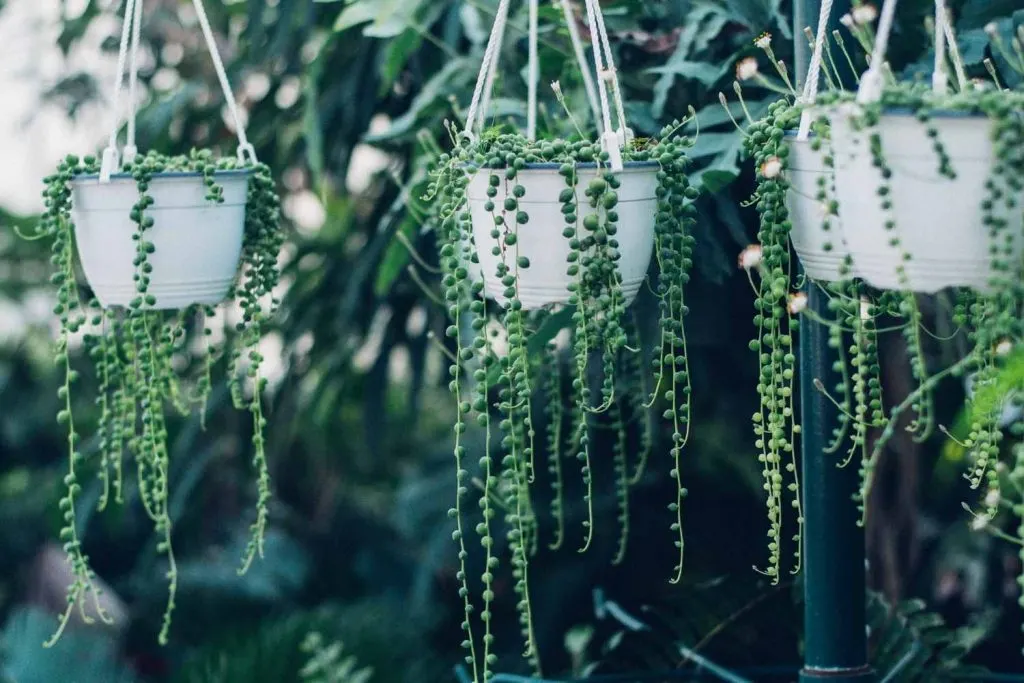
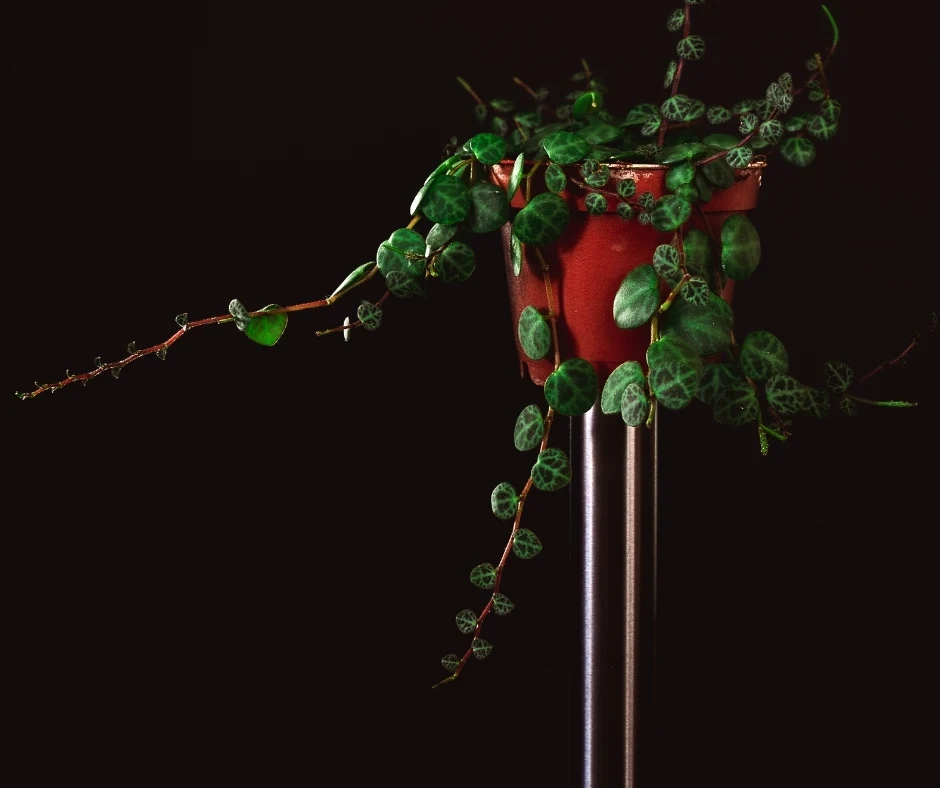
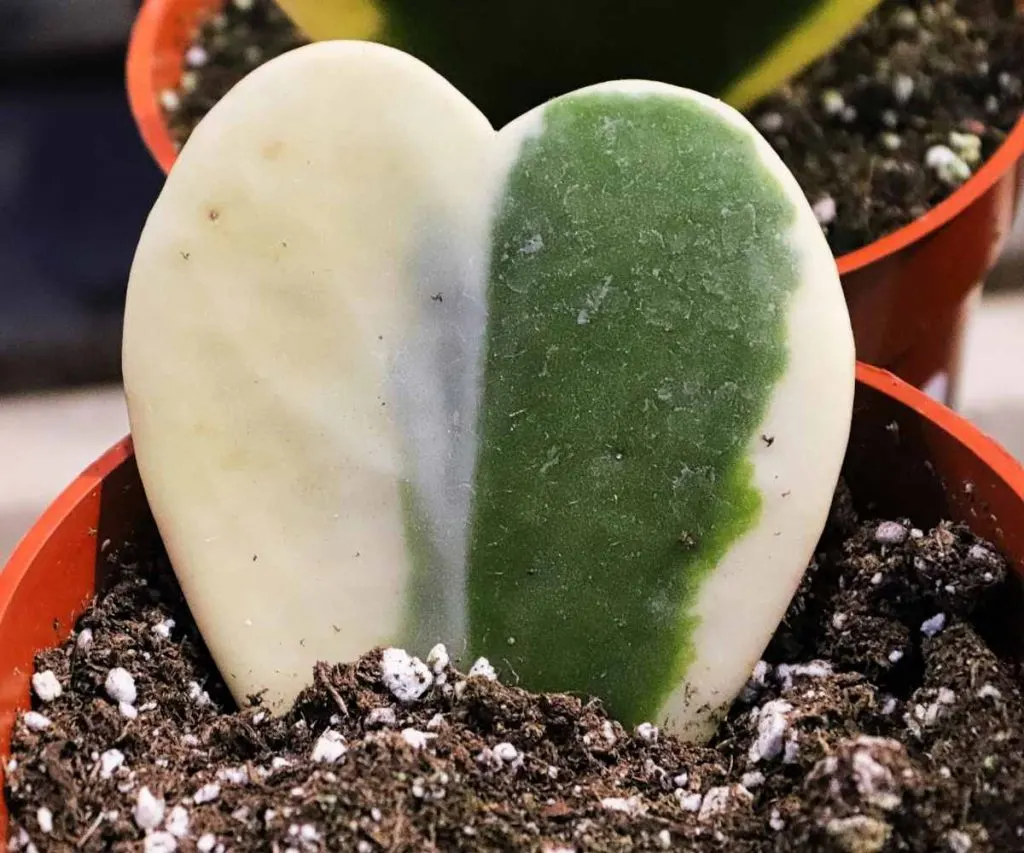
Here are a few more posts you may enjoy.
Follow Us:
Find us on YouTube, Instagram , Pinterest and TikTok! We love to Plant chat. We also comment, like and occasionally share your content to our daily stories. We’d love to see your plants. Share your joy in your houseplants. Happy Planting!
